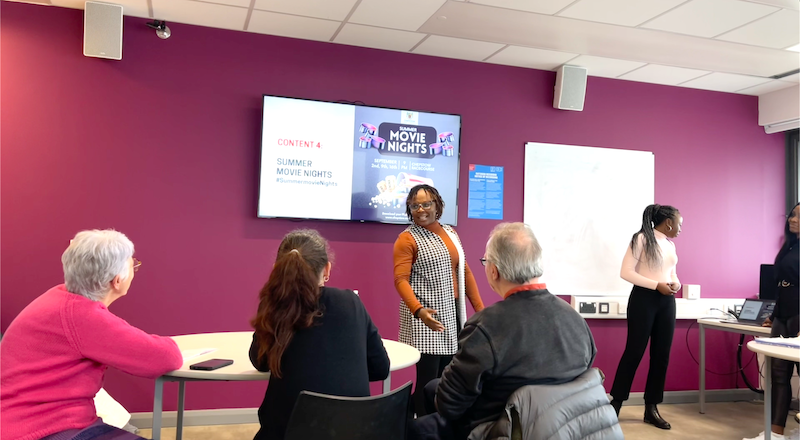Earning my Master’s in Strategic and Digital Marketing was an amazing journey full of meaningful insights and useful skills. I discuss my key learnings from the Integrated Marketing Communications (IMC) module, which the esteemed Sofia Christidi taught, in this blog post.
This is the third part of my MSC Strategic and Digital Marketing Experience Series, where I share insights from my post-graduate program at the University of South Wales. The subsequent parts of this series can be found HERE
Also read: The Contemporary Marketing Module: From Business Models to Storytelling
Unveiling the Foundations
Our journey into the module started with an introduction to the world of integrated marketing communications, where we delved into the works of Fill and Turnbull. Their marketing communications book was a great resource for me as it introduced me to case studies of successful global integrated marketing communications campaigns in a variety of industries, including sports, transportation, health, and other sectors. Clearly, reading relevant books is very important and cannot be stressed enough.
Crafting Engaging Narratives
Throughout the module, it was stressed that engagement is at the heart of integrated marketing communications. According to Chris Fill, marketing communications is an audience-centered activity designed to spark conversations. Successful campaigns are built on the thinking, feeling, and behavioral responses that drive engagement. Additionally, the DRIP model (Differentiate, Reinforce, Inform, Persuade) and the AIDA frameworks (Attention, Interest, Desire, Action) were presented to us as efficacious instruments for facilitating structured pathways towards successful communication.
From Concepts to Campaigns
As the module moved from the theoretical to the practical, it covered the details of campaign development. We learned that campaigns are strategic, time-bound initiatives with memorable, catchy names, and not merely transient endeavors. The significance of justifying campaign ideas and aligning them with the target audience became evident. Using real-world examples like “Unleash Your Colors” and “Monty the Penguin,” we saw how creativity can make campaigns stand out and be remembered.
Also read: My Journey Through The Personal And Professional Skills Development (PPSD) Module
The Second R – Relevance
Each week, our instructor, Sofia, summarized our progress toward achieving an “R” in marketing communications. Of the three “R’s recipient, relevance, and respect, relevance seemed to me to be the most important. This is a result of my learning that creativity is an endeavour that is entwined with relevance rather than existing independently. Aligning campaigns with the brand and audience ensures a lasting impact. Relevance, the second R of marketing communications, stood out as a key lesson, highlighting the significance of contextual creativity.
Tools of the Trade
During one of our sessions, we examined the different toolkits available to marketers for messaging and marketing communications mix. We learned that advertising, packaging, product placement, and public relations are all crucial elements in creating brand narratives. We also looked at the impact of media relations, celebrity endorsements, and PR stunts as effective strategies to shape public perception.
The Art of Messaging
Crafting a message that appeals to the target audience is an art, and it involves experimenting with different tones and emotions. The list of emotions, such as anger, laughter, sadness, and happiness, became the palette for creating compelling messages. It is important to note that fear doesn’t resonate universally with all organizations, which highlights the need for nuanced emotional communication.

A Personal Touch
Throughout the module, we learned that personalization is crucial in marketing communications. The focus should be on the recipient, the first R. To craft impactful messages, it’s important to understand the client’s image, analyze competitors, and incorporate societal trends. All these steps form the foundation for successful marketing communications campaigns.
Culmination and Reflection
At the end of the module, we applied what we learned in a campaign project for the Chepstow Town Council. The mayor and council members attended our presentation, which highlighted the relevance and impact of the module. Additionally, our visit to St. David’s Mall in Cardiff City Centre for experiential marketing provided a concrete link between theory and real-world application.
How To Get More Instagram Views And Engagement With Reels
Embracing the Future
In conclusion, the Integrated Marketing Communications module was more than an academic pursuit; it was a transformative experience. The blend of theoretical insights, case studies, and hands-on projects equipped me with a holistic understanding of marketing communications. As I look to the future, I carry with me the lessons of engagement, creativity, and relevance, poised to make a meaningful impact in the dynamic world of marketing.
DISCLAIMER: This article may contain some affiliate links, meaning I may receive a small commission if you click on some of the product links and decide to purchase.
